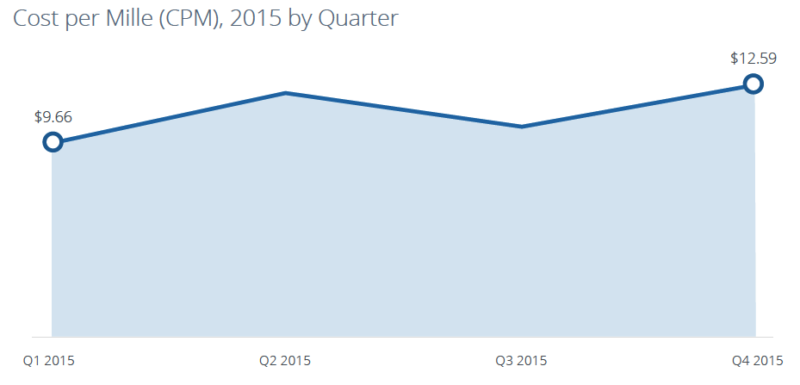Generating Leads On Facebook: What You Need To Know
Columnist Andrew Waber delves into Facebook ad data and comes away with some best practices to help lead generation advertisers reach consumers at the right time.

Back in September, I conducted an examination of ecommerce advertising and purchase activity run through Nanigans software, which was developed by the company that employs me. I noted some clear behavioral patterns, such as consumers generating the greatest share of purchases on Wednesday or Thursday of a given week.
In this column, the focus turns to lead generation advertisers who, as a whole, seek to drive more complex conversions, like contacting a mortgage lender or requesting a car insurance quote. Facebook advertising data shows how advertisers in this ecosystem need to expect remarkably different behavioral and market dynamics, requiring a corresponding shift in strategy and testing considerations.
A notable example of differences between lead generation and industries like ecommerce is the aforementioned weekly purchase and ad spend pattern. For lead gen advertisers, Sunday through Wednesday show the highest percentage of conversions and ad spend:

Compare this with ecommerce advertisers, who attract the largest share of purchases midweek:

Time Your Promotions To Match Behavior Patterns
The differences between these two data sets emphasize how advertisers need to time their promotional efforts to best match the behavior patterns of their specific target market, rather than adhere to general best practices for a given advertising channel.
It stands to reason that ecommerce purchases typically over index during the workweek because users are more likely to conduct an impulse purchase while browsing Facebook at work or during the morning commute — a hypothesis supported by hourly purchase patterns.
Meanwhile, lead generation companies typically operate in completely different markets — connecting consumers with universities, auto insurance providers, financial services firms and so on. Inherently, the nature of their businesses and target markets necessitates being much more discerning with their advertising budgets and strategy.
Targeting users at a moment when they can take the time to consider and fill out a form with their contact information has a positive impact on the cost of capturing leads, along with click-to-lead conversion rates:


Of course, the data above should be taken as general guidance rather than infallible trends across the lead gen industry. Keep in mind that while these stats represent tens of millions of dollars in industry ad spend over the course of 2015, they are aggregated across Nanigans’ lead generation advertisers, which can differ considerably.
Most ecommerce advertisers may share a common goal and target market segments, but this isn’t usually the case with lead gen advertisers. More detailed and complex goals mean marketers in this space utilize unique and varied targeting to get in front of specific groups of users who are likely to be most receptive to their particular offering (e.g., continuing education, financial services).
This need for extremely granular and people-based targeting makes Facebook an especially effective advertising platform for these companies.
Thanks to Facebook’s ability to target extremely small subsections of users based on detailed criteria, lead gen advertisers can minimize wasted ad spend. This type of targeting strategy results in more CPMs at a high level but helps manage the overall cost-per-lead and keep conversion rates relatively high.

As one example, an in-house marketing team at a large-scale advertiser in the education sector combined audience segmentation with granular bidding strategies based on downstream value. To help ensure prioritization of the highest-performing creative across audience segments, the team extensively employed automated creative testing at all stages of the campaign.
By prioritizing increased efficiency and high user value, the advertiser achieved continuous quarter-over-quarter improvements in return on ad spend, conversion rates (from ad click to lead conversion) and average cost per lead. Having tested extensively to understand what it takes to reach their market effectively over time, the advertiser was able to scale its budgets confidently.
Things To Consider
Along with testing out Facebook’s new Lead Gen ad units, it’s worthwhile for lead gen advertisers to consider the following as they construct their creative:
- Will the user understand what they’re signing up for?
- Do you make your value proposition clear?
- Is the form long enough to get the information you need, but short enough to keep users from dropping off prior to submission?
Further testing with aspects like form layout are likely to reveal specific market nuances that can pay equally high dividends. Certain hours, bid or creative types may be best for a given business, depending on market-specific factors and campaign objectives.
Probably more than any other industry, lead generation advertisers need to be extremely data-focused to properly reach consumers when they are ready to engage. These stats and best practices may help you achieve this goal.
Contributing authors are invited to create content for MarTech and are chosen for their expertise and contribution to the search community. Our contributors work under the oversight of the editorial staff and contributions are checked for quality and relevance to our readers. MarTech is owned by Semrush. Contributor was not asked to make any direct or indirect mentions of Semrush. The opinions they express are their own.
Related stories